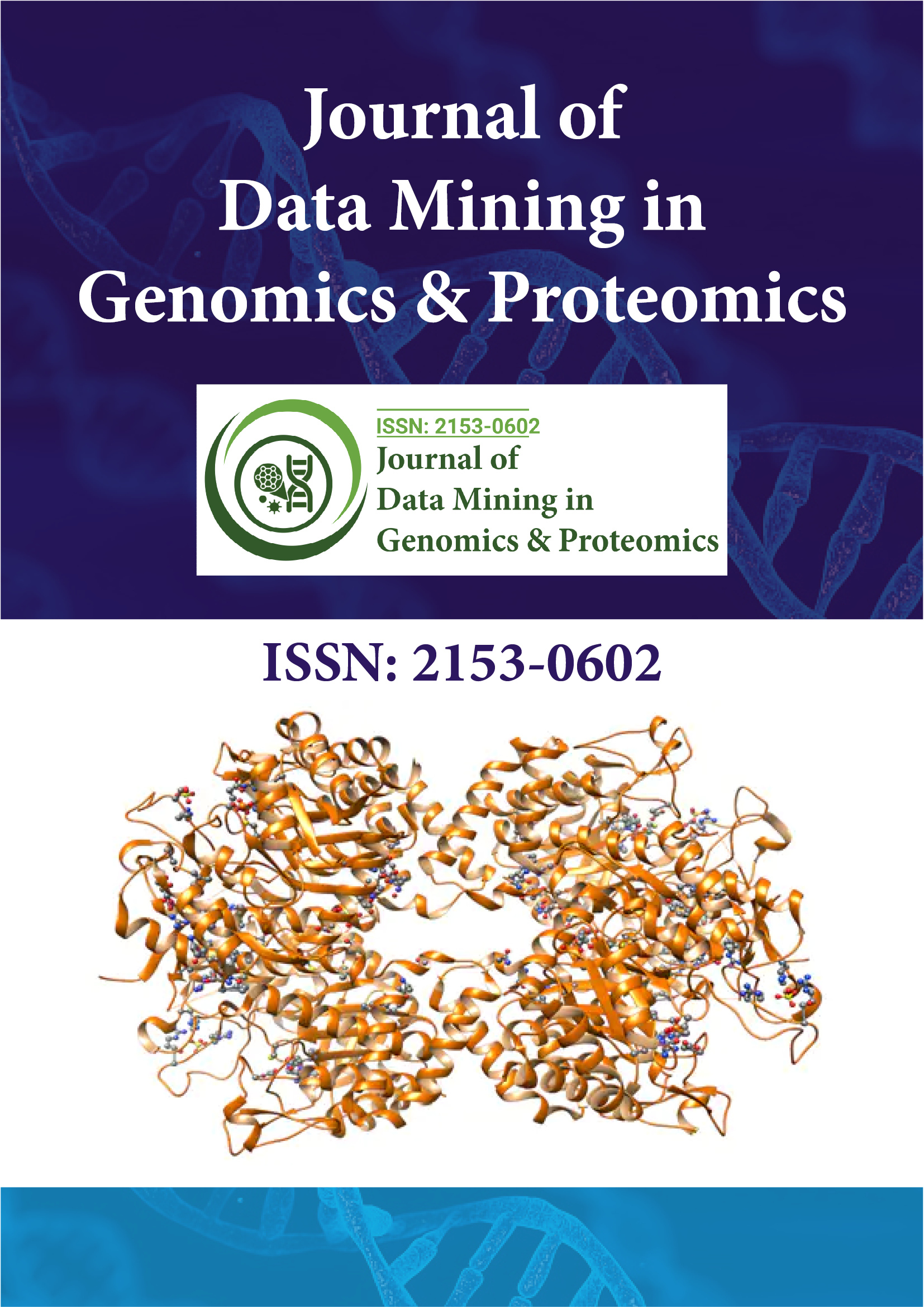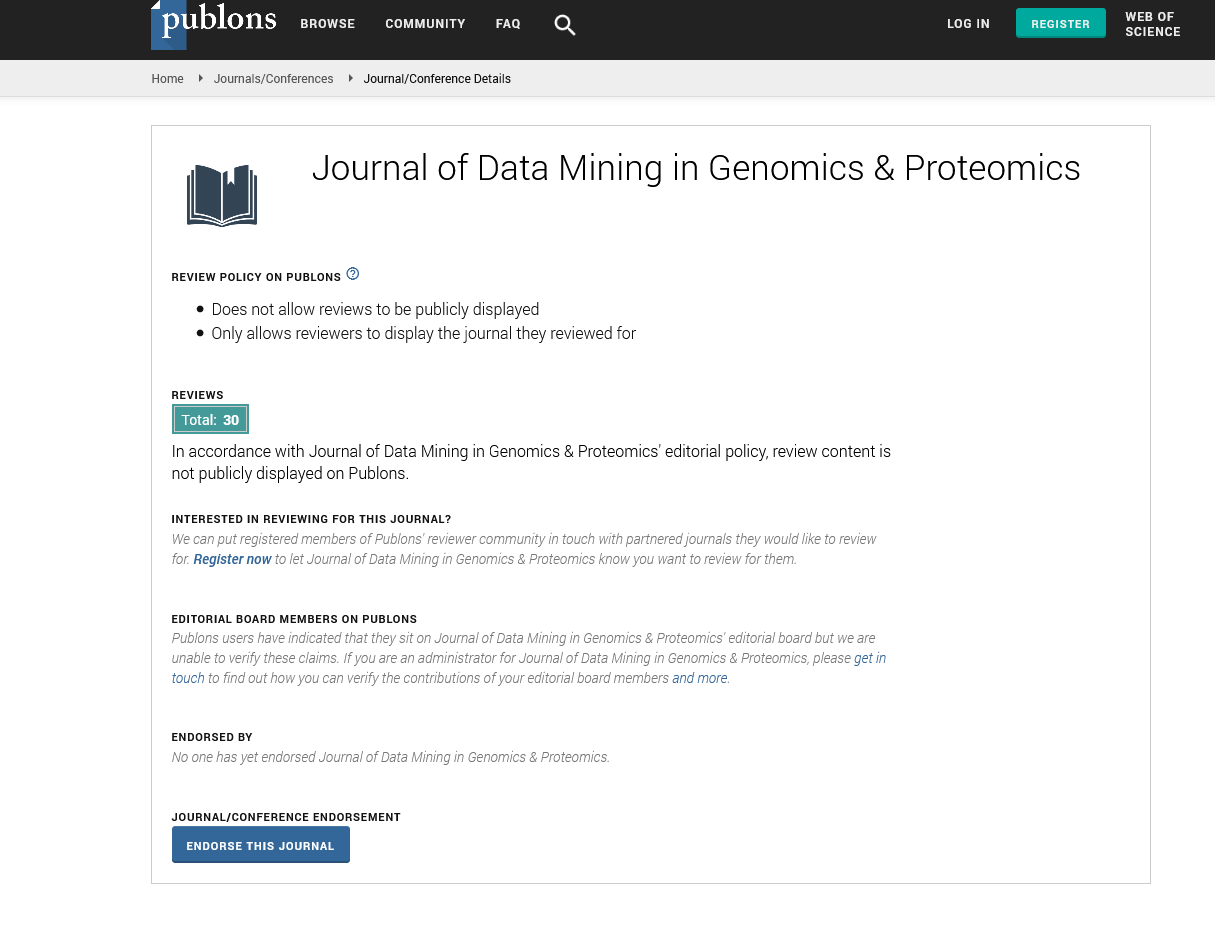Indexed In
- Academic Journals Database
- Open J Gate
- Genamics JournalSeek
- JournalTOCs
- ResearchBible
- Ulrich's Periodicals Directory
- Electronic Journals Library
- RefSeek
- Hamdard University
- EBSCO A-Z
- OCLC- WorldCat
- Scholarsteer
- SWB online catalog
- Virtual Library of Biology (vifabio)
- Publons
- MIAR
- Geneva Foundation for Medical Education and Research
- Euro Pub
- Google Scholar
Useful Links
Share This Page
Journal Flyer

Open Access Journals
- Agri and Aquaculture
- Biochemistry
- Bioinformatics & Systems Biology
- Business & Management
- Chemistry
- Clinical Sciences
- Engineering
- Food & Nutrition
- General Science
- Genetics & Molecular Biology
- Immunology & Microbiology
- Medical Sciences
- Neuroscience & Psychology
- Nursing & Health Care
- Pharmaceutical Sciences
Perspective - (2024) Volume 15, Issue 4
Genomic Co-Alterations in FGFR2 Fusions and Rearrangements across Advanced Solid Tumors
Benjamin Scarimbolo*Received: 20-Nov-2024, Manuscript No. JDMGP-24-27959; Editor assigned: 22-Nov-2024, Pre QC No. JDMGP-24-27959 (PQ); Reviewed: 06-Dec-2024, QC No. JDMGP-24-27959; Revised: 13-Dec-2024, Manuscript No. JDMGP-24-27959 (R); Published: 20-Dec-2024, DOI: 10.4172/2153-0602.24.15.359
Description
Fibroblast Growth Factor Receptor 2 (FGFR2) fusions and rearrangements have emerged as significant oncogenic drivers in various advanced solid tumors, including cholangiocarcinoma, gastric cancer and breast cancer. FGFR2, a member of the fibroblast growth factor receptor family, plays a pivotal role in cell proliferation, differentiation and survival. Aberrations in FGFR2, such as gene fusions or rearrangements, can lead to constitutive activation of downstream signaling pathways, driving tumorigenesis and disease progression. However, FGFR2 alterations rarely occur in isolation. Instead, they are often accompanied by genomic co-alterations that can significantly influence tumor behavior, treatment response and resistance mechanisms. This article describes the region of genomic co- alterations associated with FGFR2 fusions/rearrangements and their clinical implications in advanced solid tumors.
FGFR2 fusions and rearrangements
FGFR2 fusions and rearrangements involve the fusion of the FGFR2 gene with various partner genes, resulting in aberrant activation of FGFR2 signaling. These alterations are frequently observed in intrahepatic cholangiocarcinoma, where they are present in approximately 10% to 15% of cases. FGFR2 fusions can lead to ligand-independent dimerization and constitutive activation of the receptor, driving oncogenic signaling through pathways such as MAPK, PI3K-AKT and STAT.
Common fusion partners for FGFR2 include genes such as BICC1, AHCYL1 and PPHLN1, among others. The diversity of fusion partners contributes to the heterogeneity observed in FGFR2-driven tumors. While FGFR2-targeted therapies, such as selective Tyrosine Kinase Inhibitors (TKIs) like pemigatinib and futibatinib, have shown potential clinical efficacy, responses can vary significantly based on the presence of additional genomic co-alterations.
Genomic co-alterations in FGFR2-driven tumors
Genomic co-alterations refer to additional genetic changes that coexist with FGFR2 fusions/rearrangements in the same tumor. These alterations can affect main oncogenic and tumor suppressor pathways, contributing to tumor aggressiveness, therapeutic resistance and clinical outcomes.
KRAS and NRAS mutations: RAS pathway mutations are frequently observed alongside FGFR2 fusions and can drive resistance to FGFR inhibitors. Mutations in KRAS or NRAS often result in constitutive MAPK pathway activation, bypassing FGFR2 signaling and rendering FGFR-targeted therapies less effective.
PIK3CA mutations: Alterations in the PI3K pathway, such as PIK3CA mutations, are another common co-alteration. These mutations can sustain downstream signaling independently of FGFR2 activation, promoting cell survival and therapy resistance.
TP53 mutations: TP53 is one of the most commonly mutated tumor suppressor genes and is often co-altered with FGFR2 rearrangements. Mutations in TP53 can drive genomic instability and enhance tumor progression, complicating treatment strategies.
ERBB pathway alterations: Co-occurring ERBB pathway mutations or amplifications, such as those affecting ERBB2 (HER2) and ERBB3, can contribute to therapeutic resistance and tumor heterogeneity, further complicating targeted treatment approaches.
Clinical implications of genomic co-alterations
The presence of genomic co-alterations in tumors with FGFR2 fusions/rearrangements has significant clinical implications. First, these co-alterations can influence sensitivity and resistance to FGFR inhibitors. For example, KRAS or PIK3CA mutations may render FGFR inhibitors less effective, necessitating combination therapies targeting multiple pathways.
Second, genomic co-alterations can serve as potential biomarkers for predicting treatment response. Patients with FGFR2 fusions and a lack of additional co-alterations may experience more strong and durable responses to FGFR inhibitors.
Lastly, understanding the genomic region of FGFR2-driven tumors is essential for designing personalized treatment strategies. Comprehensive genomic profiling, including Next- Generation Sequencing (NGS), can identify both FGFR2 fusions and associated co-alterations, allowing for customized therapeutic interventions.
Future directions and challenges
Despite significant progress in targeting FGFR2 fusions, therapeutic resistance remains a major challenge. Acquired resistance mechanisms, including secondary FGFR2 mutations and activation of bypass signaling pathways, highlight the need for novel therapeutic strategies.
Future research should focus on developing combination therapies that address both FGFR2 signaling and co-altered pathways. Additionally, more clinical trials are needed to validate the efficacy of targeted therapies in patients with specific co-alteration profiles.
FGFR2 fusions and rearrangements play a critical role in driving tumorigenesis in several advanced solid tumors. However, their clinical behavior and therapeutic response are heavily influenced by genomic co-alterations. Identifying and understanding these co-alterations is essential for optimizing targeted therapies and overcoming resistance mechanisms. With advances in genomic profiling technologies and a growing understanding of FGFR2 biology, more effective and personalized treatment strategies are on the horizon.
Citation: Scarimbolo B (2024). Genomic Co-Alterations in FGFR2 Fusions and Rearrangements across Advanced Solid Tumors. J Data Mining Genomics Proteomics. 15:359.
Copyright: © 2024 Scarimbolo B. This is an open-access article distributed under the terms of the Creative Commons Attribution License, which permits unrestricted use, distribution, and reproduction in any medium, provided the original author and source are credited.

